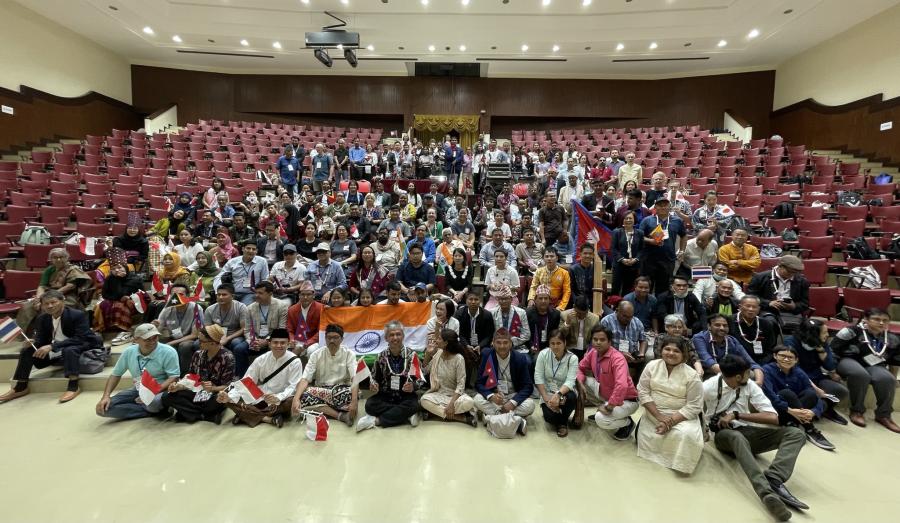Rural migration from the former British West Indies has been uninterrupted since Emancipation in 1838. Destinations are varied - local urban centers, neighboring Caribbean countries, the United States, Canada and England - as has been the length of stay away from home - a few weeks, a couple of years, two or three decades, a lifetime. Those who return after spending several years overseas have generally improved their lot; they are better off financially, sometimes better educated, occasionally less tolerant of local racial and class disparities, and sometimes desirous of transforming existing social, economic, and political conditions. Even those who leave for good often have an impact on their homelands by remitting cash and other resources to family left behind.
As elsewhere in the developing world, the homeward transfer of migrant earnings is a well-established custom in the English-speaking Caribbean. Seasonal farm workers in the United States and Canada, for example, remit up to one-half of their earnings to their families in the Bahamas, Jamaica, and St. Vincent. Earnings repatriated from overseas form the major or even sole source of support for a quarter or more of households in rural communities in several of the Leeward and Windward Islands, including Montserrat, Nevis, Barbados, and St. Vincent. Remittances make up a large part of total island revenue or are the principal source of hard currency in the American and British Virgin Islands, Anguilla, Barbuda, Carriacou, Jamaica, Montserrat, and elsewhere.
The Impact of Migrant Remittances
Numerous scholars have argued that remittances benefit developing countries by reducing balance-of-payments deficits, providing scarce foreign revenue, accelerating capital formation, financing job creation, supporting technical improvements in peasant cultivation, and increasing rural family incomes. It is generally acknowledged that rural West Indian economic development is constrained by a shortage of capital for productive and innovative investment: the expansion of employment opportunities in new agro-industries; the financing of radical alterations in technology; the market transfer of idle lands to cash-starved peasant cultivators; the purchase of farm implements, seeds, pesticides, and fertilizer; and the occasional hiring of labor are highly desirable but frequently unachievable throughout the region. But migrants' remittances rarely contribute to rural economic development. On the contrary, rather than ameliorating economic conditions, remittances, and the entire migratory system of which they are a part, may be exacerbating West Indian rural stagnation.
Spent on food, clothing, and other personal and household necessities, remittances meet the everyday subsistence needs of large numbers of families. They are also expended on building, repairing, or enlarging residential dwellings; for acquiring prestigious foreign consumer amenities - expensive tinned food, fashionable clothing, contemporary home furnishings, fancy electrical appliances, indoor plumbing facilities, stereo equipment, and other symbols of modernization; for purchasing agricultural land, small shops, livestock, motor vehicles, and sailing vessels; for financing local and external education or the passage overseas of additional family members; and for paying the expenses to celebrate marriage, birth, and other rites of passage.
To be sure, direct economic aid from migrants raises the material quality of life of many families. Sanitation, health care, and even nutrition may be improved, along with access to previously unattainable consumer goods. But these improvements depend on continued remittances; they do not reflect an increase in local income-generating activities or an expansion in employment opportunities. Indeed, a better level of living for some families may mean relative deprivation for others. In Nevis, for example, remittances from middle-class migrants in the United States has merely increased the prosperity of already comfortable families. Increased access to educational facilities, due to remittances, has also had a little overall developmental impact in Montserrat. As a formal requirement for entry into the civil service and the attainment of middle-class status, secondary school education, especially among country children, is financed increasingly by remittances from overseas. But this expansion in educational opportunities has led to an accelerated exodus of graduates rather than to local economic expansion or job creation.
In St. Vincent, dependence on external funding to finance schooling and the purchase of imported items intensifies the desire to migrate. The wish to leave is acute among the rural youth and produces a "migration mentality" in which escape from the island is viewed as the only means of achieving anything in life together with a disdain of working-class occupations, especially agricultural wage-labor. The net result is the re-export of much needed capital from the most underdeveloped countries and the loss of some of the most ambitious, educated, and talented members of the society.
Remittances are also sometimes sent to relieve older people of the burden of physically demanding agricultural tasks. The result has been decreased subsistence and peasant production together with an increased reliance on imported food. In addition, remittances make many younger agricultural laborers reluctant to accept the small wages offered by the estates and have even led to the demise of whole industries such as cotton production in Montserrat. Many small growers are also affected. They are unable to secure supplementary labor because remittances and occasional non-farm jobs allow younger men to avoid vigorous agricultural work.
In St. Vincent, investment of remittances in house lots and farmland has also adversely affected agricultural production. Such holdings normally remain uncultivated or are farmed well below their potential by the resident dependents of the migrant owners. Competition for available acreage, particularly holdings earmarked for housebuilding, has inflated prices well beyond the reach of landless peasants eager to farm land of their own.
The result of investments in business enterprises such as bars and grocery stores has also been disappointing. Small in scale and capital investment, employing only family members, and serving as a distribution outlet for expensive imported food and drink, such tertiary-sector ventures can hardly be said to add to rural productivity. Rather than being viable profit-making concerns, most are social gathering places which demonstrate the already established economic position of the proprietor. Business failure is high in such enterprises because of intense competition - some small villages have a dozen or more rum shops and tiny grocery stores.
Conclusion
It would be shortsighted to blame individual migrants or their families for the disappointing role of remittances. Without external cash inputs many West Indians would be reduced to either bare subsistence or extreme poverty. Moreover, the scarcity of investment outlets and the need to display increases in wealth expected to have resulted from the migratory experience are the product of three centuries of colonial exploitation during which the bulk of the profits from plantation agriculture were drained out of the region to England. Western European modes of stratification and patterns of consumption were simultaneously internalized by all sectors of the Caribbean population.
Rather than being a catalyst for development, remittances maintain extant socio-economic conditions in the West Indies. Without migration and remittances such societies might be forced to change their systems of production, alter their social structures, or make other radical transformations in order to survive. In developmental terms, the main beneficiaries of migration from the West Indies are the industrial-capitalist societies of the already developed world who exploit migrant labor and/or export manufactured items to the Third World.
Article copyright Cultural Survival, Inc.



